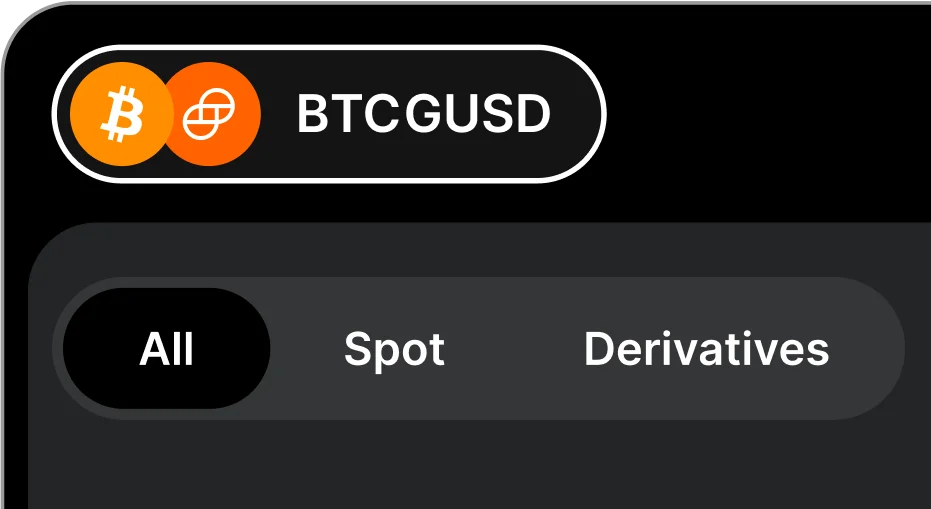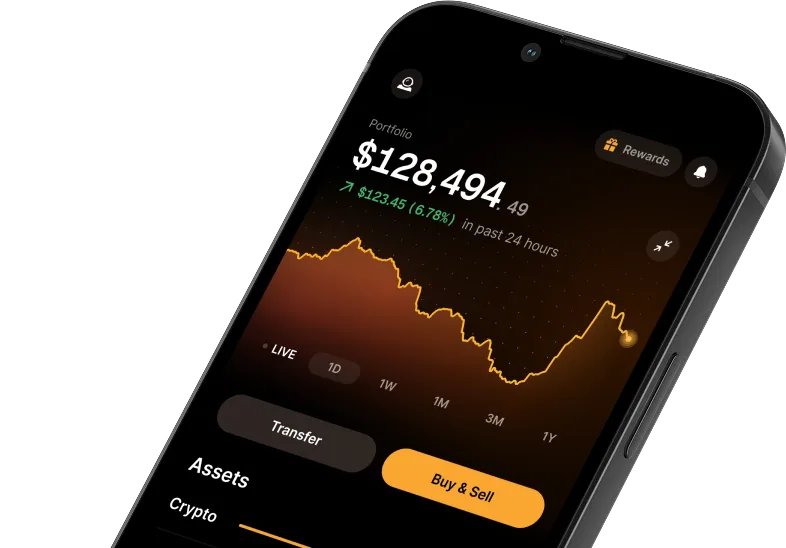Ether (ETH) Price
Ether
ETH
$2,918.19
-$7.28 (-0.25%)
LIVE
Volume (24 h)
$10.11M
Offre en circulation
120.7M
Capitalisation boursière
$353.1B
À propos de l'ether (ETH)
Ethereum est une plateforme de cryptomonnaies et de blockchain qui fournit un système informatique mondial décentralisé sur lequel les développeurs peuvent créer des applications décentralisées (dApps) et leurs propres tokens de cryptomonnaie.
Ethereum a été cité pour la première fois dans un livre blanc publié par le programmeur Vitalik Buterin en 2013. Le réseau Ethereum est un ordinateur virtuel décentralisé doté d'un langage de programmation qui permet aux développeurs de créer et d'exécuter des contrats intelligents. Les contrats intelligents sont des programmes informatiques qui peuvent automatiquement faciliter, vérifier ou appliquer les termes d'un contrat conclu par des contreparties humaines ou informatiques. Les ressources informatiques distribuées que le réseau Ethereum met à profit dans le cadre d'un contrat intelligent sont payées en ether, son unité monétaire.
Si le bitcoin est une sorte « d'or numérique » (c'est-à-dire une réserve de valeur), alors l'ether est le « pétrole numérique » qui alimente un ordinateur mondial décentralisé.
Achat ETH
0.001713 ETH
$100
$500
$1000
$5000

Télécharger le
Application mobile Gemini

Parrainez vos amis, gagnez des cryptomonnaies.
Invitez vos amis sur Gemini et gagnez tous les deux 50 $ en cryptomonnaie votre filleul tradent 100 $ au cours des 30 premiers jours.
Jetons populaires

Gemini ActiveTrader®
Trader Ether sur la plateforme conçue et développée pour les traders
Jetons populaires
À propos de l'ether (ETH)
Ethereum est une plateforme de cryptomonnaies et de blockchain qui fournit un système informatique mondial décentralisé sur lequel les développeurs peuvent créer des applications décentralisées (dApps) et leurs propres tokens de cryptomonnaie.
Ethereum a été cité pour la première fois dans un livre blanc publié par le programmeur Vitalik Buterin en 2013. Le réseau Ethereum est un ordinateur virtuel décentralisé doté d'un langage de programmation qui permet aux développeurs de créer et d'exécuter des contrats intelligents. Les contrats intelligents sont des programmes informatiques qui peuvent automatiquement faciliter, vérifier ou appliquer les termes d'un contrat conclu par des contreparties humaines ou informatiques. Les ressources informatiques distribuées que le réseau Ethereum met à profit dans le cadre d'un contrat intelligent sont payées en ether, son unité monétaire.
Si le bitcoin est une sorte « d'or numérique » (c'est-à-dire une réserve de valeur), alors l'ether est le « pétrole numérique » qui alimente un ordinateur mondial décentralisé.
Articles de blog sur Ether
Articles Cryptopedia sur Ether
Liens et ressources Ether
Le livre blanc
L'ETH/USD poursuit son ascension fulgurante : analyse technique de Sally Ho 10 novembre 2021 ETH
Ether price converter
Foire aux questions
Qu'est-ce que l'ether ? En quoi est-il différent d'Ethereum ?

Ether or ETH is the digital asset token of the Ethereum network (similar to how bitcoin or BTC is the digital asset token of the Bitcoin network). All ETH balances and transactions are recorded on the Ethereum blockchain. The smallest subunit of ETH is the “wei,” which is named after Wei Dai, a computer engineer and cryptographer best known as creator of b-money and the developer of the Crypto++ library. One wei is equal to 10-18 ETH or one quintillionth of an ether (.000000000000000001 ETH). Ether can be bought and sold for fiat currency, e.g. ETH to USD and vice versa, or other digital currencies.
Comment acheter de l'ether (ETH) ?

Ether can be purchased on a cryptocurrency exchange and stored in a crypto wallet and custodian like Gemini.
Que sont les tokens Ethereum couche 2 ?

The Ethereum Virtual Machine (EVM) is considered Turing-complete and computationally universal. It allows developers to build Dapps that run on the EVM and pay for computational resources in ether. The EVM also allows developers to build their own digital asset tokens or layer 2 tokens on top of the Ethereum network. A number of these layer 2 tokens use the ERC-20 standard for fungible tokens. Many of these ERC20 tokens were built during and contributed to the Initial Coin Offering (ICO) boom of 2017. Other standards for layer 2 tokens have emerged such as the ERC-233 standard for fungible tokens and the ERC-721 standard for non-fungible tokens (also known as NFTs or “nifties”). The Gemini dollar , a stablecoin issued and operated by Gemini, uses the ERC-233 standard, whereas the blockchain game Cryptokitties uses the ERC-721 standard for non-fungible tokens.
Offre d'ether – L'ether a-t-il une offre maximale ?

Ether is issued at a constant annual linear rate via the block mining process. This rate is 0.3 times the total amount of ether sold (~60 million ETH) during the ether presale in June 2014, which equals 18 million ETH. This means that 18 million ETH will be issued every year in perpetuity. This is in contrast to Bitcoin, which has a supply that is fixed at 21 million BTC. While the overall supply of Ethereum will continue to increase, the growth rate of its money supply will decrease over time because the amount of ether issued per year is fixed. Because the inflation rate of ether decreases every year, ether is considered a disinflationary digital asset.
Est-il toujours possible de miner de l'ether sur Ethereum ?

No. Ethereum mining is no longer necessary following “The Merge,” as the Ethereum blockchain network now uses a proof-of-stake (PoS) transaction validation method that doesn’t require mining for ether.
Prior to “The Merge,” Ethereum had been using a proof-of-work (PoW) transaction validation method. This consensus mechanism both safeguarded the integrity of the Ethereum blockchain and required miners to run smart contracts during the mining process, which created a decentralized pool of computation resources that forms a decentralized, global computer. As a result, Ethereum mining created useful work beyond securing the Ethereum network.
Pourquoi Ethereum est-il passé de la preuve de travail (PoW) à la preuve d'enjeu (PoS) ?

Proof of Stake (PoS) is emerging as one of the most widely used blockchain consensus mechanisms in existence. PoS networks incentivize participants to stake native coins, like ether, in a network of validator nodes. Upon the close of a transaction block, validator nodes are eligible to be randomly chosen to validate block data, thus generating the subsequent block, and earning native coins as a reward. A robust nodal network offers increased network security, resiliency, and computational power.
Proof-of-Stake systems also generally enable validator nodes to contribute democratically in decentralized platform governance through voting on key updates and decisions. While still a recent innovation, PoS networks are already proving they can be faster and more scalable than Proof-of-Work (PoW) blockchains, in addition to being more energy efficient.
Quelles sont les différences entre Bitcoin et Ethereum ?

Despite being the two most popular cryptocurrencies on the market, Bitcoin (BTC) and Ethereum (ETH) are quite different from one another. As mentioned above, a common analogy used to compare Bitcoin and Ethereum is that Bitcoin is like gold and Ethereum is like oil or electricity.
Bitcoin is the oldest and most popular cryptocurrency. When looking at their overall utility, Bitcoin represents a store of value whereas Ethereum provides a decentralized payment network that offers wider possibilities like trading NFTs and creating smart contracts. Other cryptocurrencies are issued on the Ethereum network, and Ethereum is responsible for pioneering the field of decentralized finance.
While Ethereum’s versatility is a plus, it also comes with some drawbacks including higher gas fees, which can be significant, particularly on smaller transactions.
However, Ethereum transactions went through a major change when it comes to energy consumption. The “Merge,” a transition from using a proof-of-work (PoW) transaction validation method to a proof-of-stake (PoS) transaction validation method, is expected to reduce energy costs by 99%. Ethereum’s transition to a proof-of-stake blockchain (PoS) began in 2022, and continues into 2023. Bitcoin (BTC) is still using the PoW mechanism, causing a significantly higher carbon footprint than Ethereum moving forward.
Bitcoin has a capped supply vs. Ethereum which has a limitless supply.
En savoir plus sur Ether sur Cryptopedia

